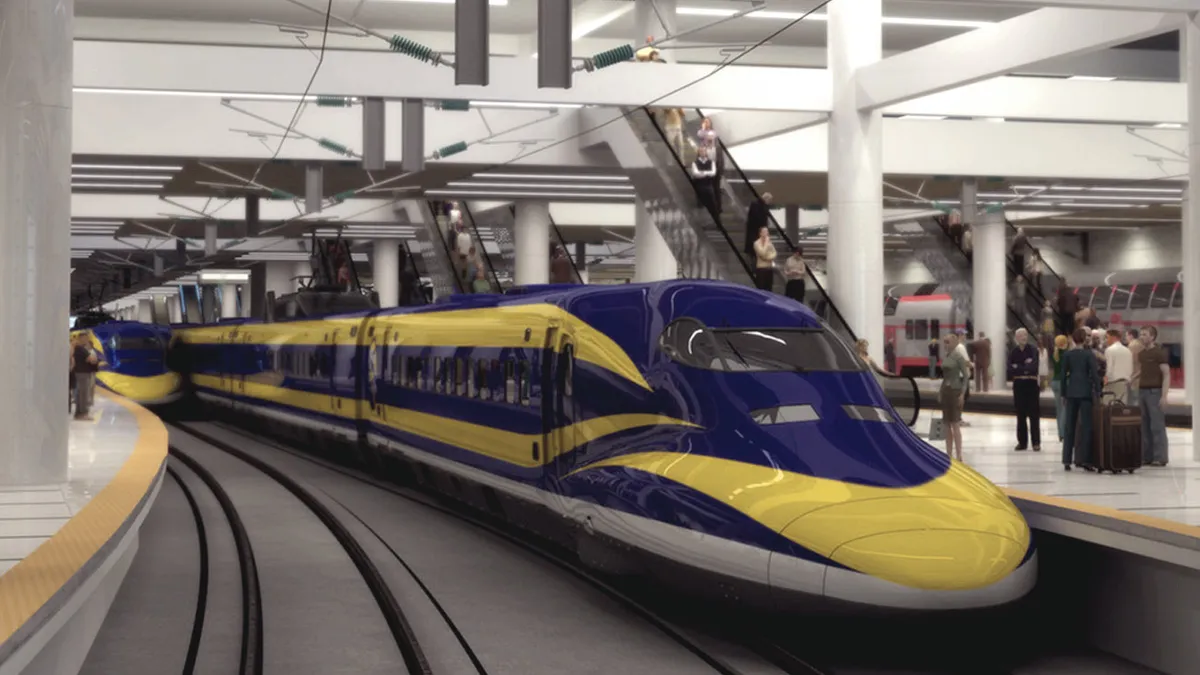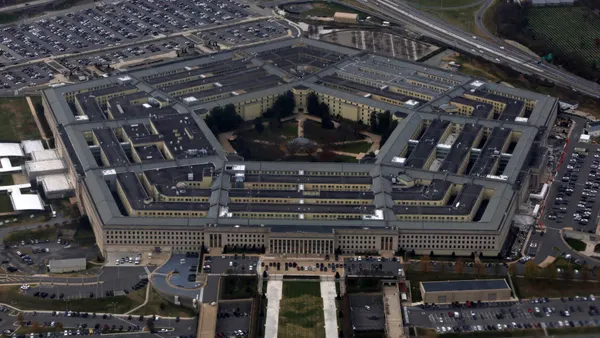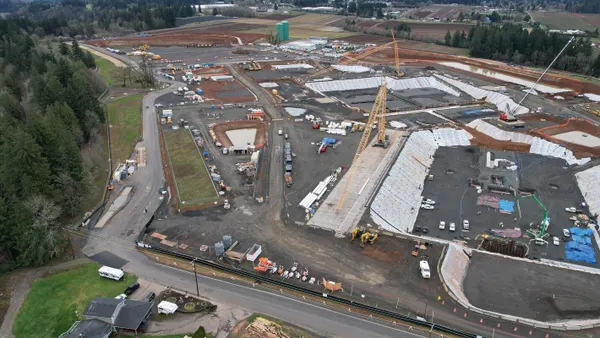Dive Brief:
- There’s a problem with American transit projects: they consistently run over budget and fall behind schedule. A new study from UC Berkeley delves into five California rail case studies to find out why.
- Local agencies tend to poorly plan infrastructure work and don’t have enough capacity to manage megaprojects, and the typically-used procurement methods create a management bottleneck, according to the Ethan Elkind et al study.
- Agencies can apply lessons from the California cases to many other U.S. transit projects, which will accelerate as the federal infrastructure act rolls out with funding for rail, bus networks and more. The researchers suggest that states staff up transit agencies and plan more extensively in early stages, and reform their procurement methods to give builders more say in project design.
Dive Insight:
Transit projects that are primarily above ground take about six months longer to complete in the U.S. than similar projects abroad, while tunnel facilities can take nearly a year and a half longer, according to a 2021 Eno Center for Transportation analysis. Plus, rail builds in the U.S. cost 50% more on average than in Europe and Canada.
The California High Speed Rail embodies this unfortunate trend. Former President Barack Obama hoped the bullet train would be a major achievement in his first term, but two administrations later, its price tag has risen from $40 billion to $105 billion and it’s nowhere close to running.
The UC Berkeley study examines the shortcomings and successes of California High Speed Rail (rendered above), along with four other California transit initiatives: The San Francisco Central Subway, Los Angeles Purple Line, San Diego Mid-Coast Corridor Trolley and the BART Berryessa extension.
Key issues the report identifies:
- Most U.S. transit projects use the design-bid-build procurement system, which creates a management bottleneck that can result in costly delays.
- Local transportation agencies typically don’t have experience managing large and complex projects, and often lack sufficient staff capacity to engage with contractors. As a result they rely too much on consultants or simply make do with existing resources.
- Transit agencies aren’t planning far enough ahead to anticipate problems that may increase costs later.
- Unnecessary enhancements added during the construction stage, or “scope creep,” can make the build take longer.
"The causes of these nationwide higher costs and delays are myriad, owing in part to the decentralized nature of land-use and infrastructure governance in the United States." the report said, yet there are many "opportunities for more efficient project delivery."
How to build a better transit project
Transit is a key tool to ward off the worst effects of climate change, and time is running out to shift from fossil fuel-propelled vehicles to more sustainable ways of getting around, according to the U.N. Specifically, public transit use must double worldwide by 2030 if nations are to stop at the 34.7°F (1.5°C) emissions target necessary to meet that goal, according to a 2021 C40 Cities and the International Transport Workers’ Federation report.
The plodding pace and sticker shock typical of U.S. transit projects makes the public less willing to invest in future efforts, the UC Berkeley report said. Plus, the current state of affairs is not ideal for anyone involved, from jurisdictions to builders to would-be riders.
Some strategies Berkeley researchers recommend to remedy busted budgets and timelines:
- Create state or regional transit megaproject delivery teams to consult with and support local agencies.
- Fund local transportation agencies so they can staff up and plan ahead more.
- For project leaders: build more time and cost contingency into estimates to account for potential design challenges and other issues. Also factor site-specific challenges into route design prior to setting time and cost estimates.
- Maintain project scope, and avoid adding significant, non-essential elements after the design stage.
- Break up the work into smaller contracts to increase flexibility, instead of one sprawling agreement. The Los Angeles Purple Line project was built on-time and on-budget with this method.
- Use a construction-manager-at-risk procurement method so builders can provide input on the design, like the successful Mid-Coast Corridor Trolley project used in San Diego.
- Consider advance utility relocation contracts to expedite utility-related work in tunneled areas and around stations.
"Transit agencies and the constituencies they serve are also eager to understand the drivers behind inefficient project delivery and options for overcoming them," the report said, and "the stakes are high."















